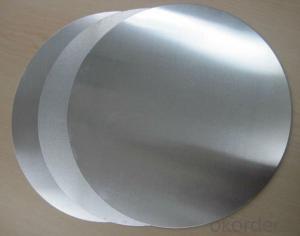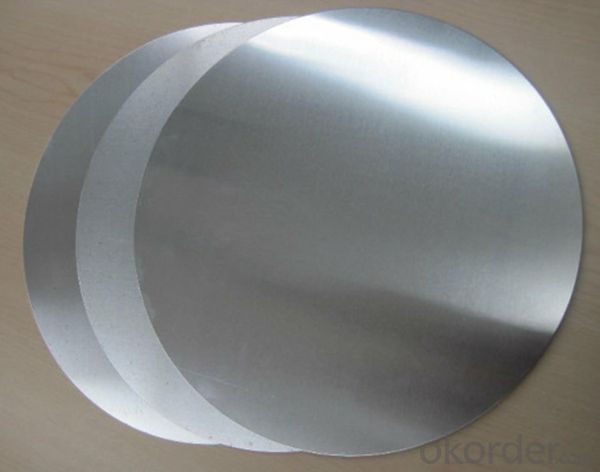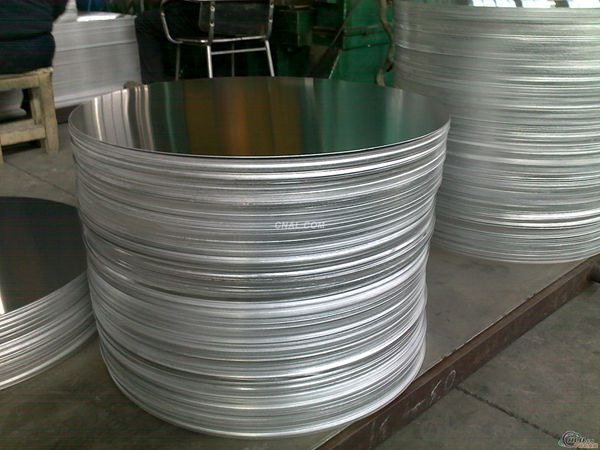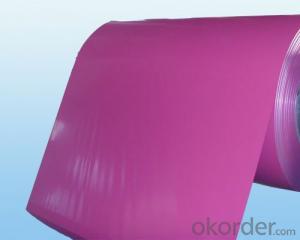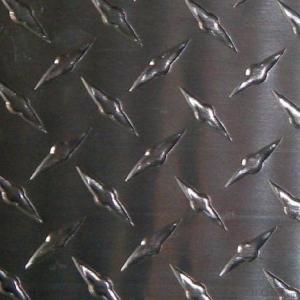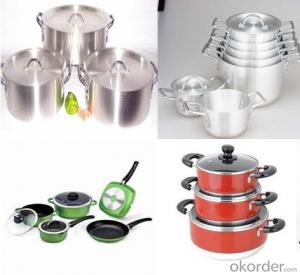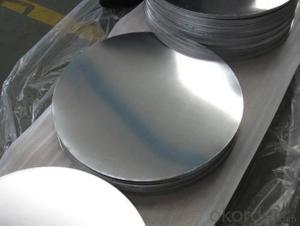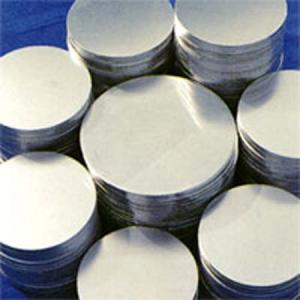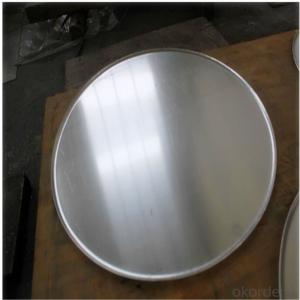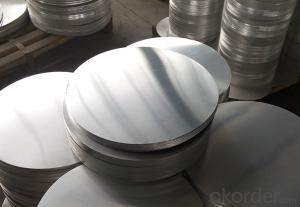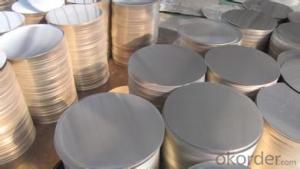Aluminum Non-Stick Kitchen Wares Aluminum Circle Pans
- Loading Port:
- Shanghai
- Payment Terms:
- TT OR LC
- Min Order Qty:
- 5 m.t.
- Supply Capability:
- 10000 m.t./month
OKorder Service Pledge
OKorder Financial Service
You Might Also Like
Specification
1.Structure of Aluminum Circle for Kitchen Wares Non-sticky Pans Description
• Product: Aluminim Circle
• Application: It is used in cookware, engineering, lighting purpose, fried pans, non-sticky pans, cooking pots, kettles, hard anodize cook wire, pressure cooker and house hold utensils, reflector of the light, etc
• Advantage: Deep drawing and hard anodizing quality Aluminum Circle Sheet can be supplied. Our Aluminum Circle is RoHS and REACH compliance and uses well-protected packing. Our circles are excellent material for producing cookware, utensil, pots, pans and kettles.
2.Main Features of the Aluminum Circle for Kitchen Wares Non-sticky Pans
• High manufacturing accuracy
• Smooth surface
• No waves
• High strength of extension and yield
• Well packaged
3.Aluminum Circle for Kitchen Wares Non-sticky Pans Images
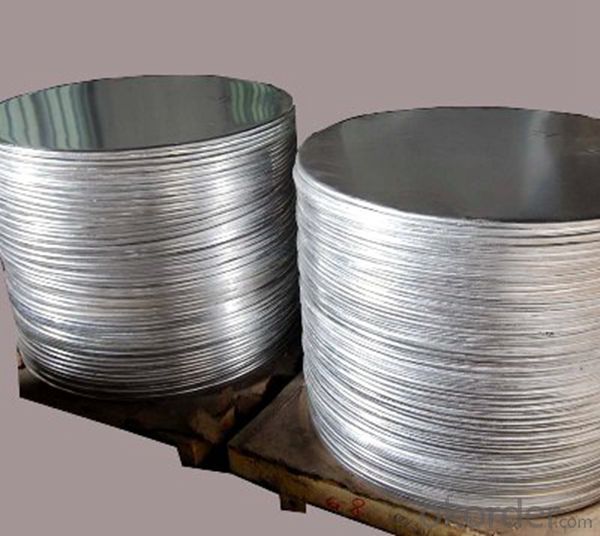
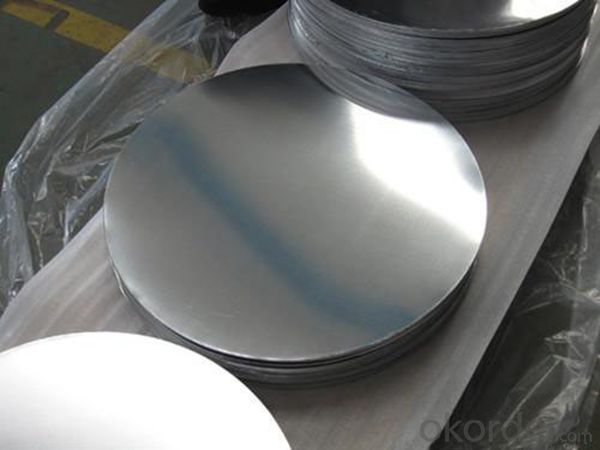
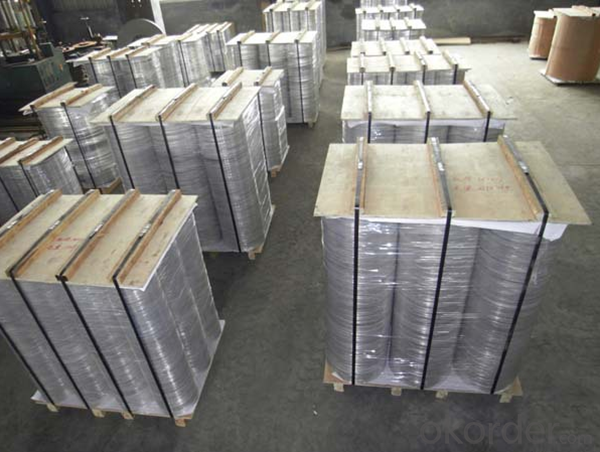
4.Aluminum Circle for Kitchen Wares Non-sticky Pans Specification
Alloy | AA1050,AA1060,AA1100 AA3003etc. |
Temper | O,H14 |
Thickness | 0.5MM-4MM |
Diagonal | 100-1200MM |
Standard | GB/T 3880-2006 |
5.FAQ of Aluminum Circle for Kitchen Wares Non-sticky Pans
We have organized several common questions for our clients,may help you sincerely:
① How about your company?
A world class manufacturer & supplier of aluminum coil and alloy blanks. Aluminum production base is comprised of 18 aluminum annealers, 10 coil and foil mills, 4 continuous production lines, 2 hot rolling production line and 3 prepainted lines.
Export 5000 tons per month to Asia, America and Middle East. Always do the best for our clients.
②Can you guarantee the quality of the products?
We are responsible for the quality of materials to get a long-term cooperation with clients in a reasonable period of time and we are glad to arrange and coordinate any third party inspection for you.
③What is the delivery time after purchase?
35 day after receiving client’s deposit or correct LC
- Q: This question asks for recent advancements or innovations in the technology related to aluminum.
- <p>Recent developments in aluminum technology include the advancement of aluminum-air batteries for energy storage, which offer a more sustainable and efficient alternative to traditional batteries. There's also the development of nanostructured aluminum alloys that exhibit superior strength and lightweight properties, making them ideal for aerospace and automotive applications. Additionally, research into aluminum recycling has led to more efficient processes, reducing waste and environmental impact. Lastly, advancements in aluminum electrolysis have improved energy efficiency, contributing to the sustainability of aluminum production.</p>
- Q: Explain how aluminum influences the propagation of sound waves.
- <p>Aluminum has a high density and stiffness, which makes it an effective conductor of sound. When sound waves hit an aluminum surface, the vibrations are quickly transmitted through the material due to its low internal damping. This results in a clear and efficient transfer of sound energy. However, aluminum's high reflectivity can also lead to a significant amount of sound being reflected rather than absorbed, which can affect the acoustics in a space, potentially causing echoes or reducing sound absorption. Additionally, aluminum's conductivity can lead to a faster decay of sound within the material, impacting the duration and quality of sound transmission.</p>
- Q: Explain the distinction between pure aluminum and aluminum alloys, focusing on their composition and properties.
- <p>Pure aluminum is composed of aluminum alone, with a high degree of purity, typically over 99%. It is soft, malleable, and has good thermal and electrical conductivity. Aluminum alloys, on the other hand, are made by combining aluminum with other elements such as copper, magnesium, or silicon to enhance their strength, durability, and resistance to corrosion. These alloys are harder than pure aluminum and can be tailored for specific applications, making them more versatile for industrial use.</p>
- Q: Describe the environmental impact of discarded aluminum.
- <p>Discarded aluminum can have significant environmental impacts. It contributes to land and water pollution, as it does not biodegrade and can leach harmful substances into the soil and water. Additionally, aluminum can disrupt the food chain when ingested by wildlife, potentially leading to health issues. The production of aluminum is energy-intensive, so recycling it reduces the demand for raw materials and decreases greenhouse gas emissions. However, improper disposal can lead to the release of toxic substances during the recycling process, further harming the environment.</p>
- Q: What limitations or precautions should be considered when using aluminum foil for cooking purposes?
- <p>Yes, there are restrictions on using aluminum foil for cooking. Avoid using it with acidic foods as it can react and release aluminum into the food. Also, refrain from using it at high temperatures, as it can melt and produce harmful fumes. Do not wrap food in aluminum foil and cook it in a microwave, as it can cause sparks and fires. Always ensure the foil is clean and free of any chemical residues from manufacturing.</p>
- Q: Is it possible to employ methods for recycling aluminum that are less harmful to the environment?
- <p>Yes, there are less harmful methods for recycling aluminum. One such method is mechanical recycling, which involves shredding and melting aluminum without the need for chemical processing, reducing environmental impact. Additionally, promoting a circular economy by designing products for disassembly and recycling can minimize waste. Encouraging consumer participation in recycling programs and improving recycling technology also contribute to more sustainable aluminum recycling practices.</p>
- Q: Is it possible to use pure aluminum for crafting jewelry or sculptures?
- <p>Yes, you can use pure aluminum for jewelry making or sculpture, but it's not as common as other metals due to its lower melting point and softer nature. Pure aluminum is lightweight, affordable, and easy to work with, making it suitable for certain types of designs. However, it's not as durable or resistant to scratches as metals like silver or gold, and it may require special care to maintain its appearance. It's also important to consider the potential for allergic reactions, as some people are sensitive to aluminum.</p>
- Q: This question asks about the energy savings achieved by utilizing recycled aluminum compared to producing new aluminum.
- <p>Using recycled aluminum saves a significant amount of energy. It requires only 5% of the energy needed to produce new aluminum from raw materials. This is because recycling aluminum involves melting the metal, which is much less energy-intensive than the mining, refining, and electrolysis processes required for new aluminum production. By recycling aluminum, we can save up to 95% of the energy that would be used in the production of new aluminum.</p>
- Q: Is it safe and common to use aluminum in food packaging?
- <p>Yes, aluminum is commonly used in food packaging due to its lightweight, durability, and excellent barrier properties against light, oxygen, and moisture. It is often used in the form of aluminum foil and aluminum-coated films or laminates to protect food and extend its shelf life. However, there are concerns about the potential health risks of aluminum exposure, and it's important to note that regulations and guidelines exist to ensure that aluminum levels in food packaging are safe for consumers.</p>
- Q: Is there a more environmentally friendly method for recycling aluminum?
- <p>Yes, aluminum can be recycled in a more environmentally friendly way. The process of recycling aluminum is already quite efficient, as it requires only 5% of the energy needed to produce new aluminum from raw materials. However, further improvements can be made by optimizing recycling processes, reducing transportation emissions, and increasing the use of recycled aluminum in new products. Additionally, implementing closed-loop recycling systems where aluminum is continuously recycled without loss in quality can minimize waste and environmental impact. Educating consumers about the importance of recycling and improving collection systems can also contribute to more sustainable aluminum recycling practices.</p>
Send your message to us
Aluminum Non-Stick Kitchen Wares Aluminum Circle Pans
- Loading Port:
- Shanghai
- Payment Terms:
- TT OR LC
- Min Order Qty:
- 5 m.t.
- Supply Capability:
- 10000 m.t./month
OKorder Service Pledge
OKorder Financial Service
Similar products
Hot products
Hot Searches
Related keywords
